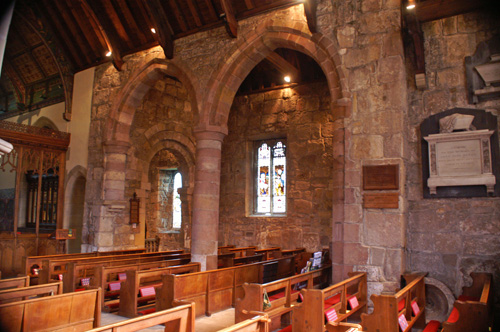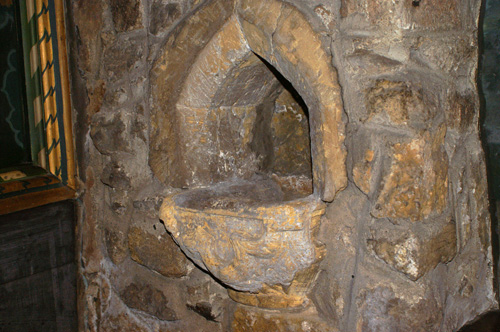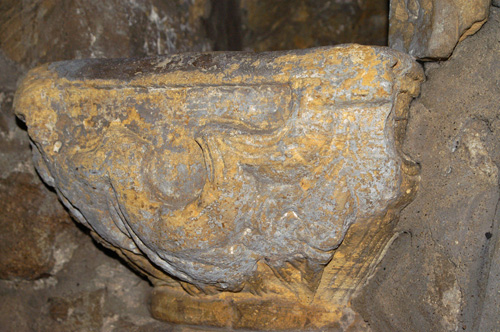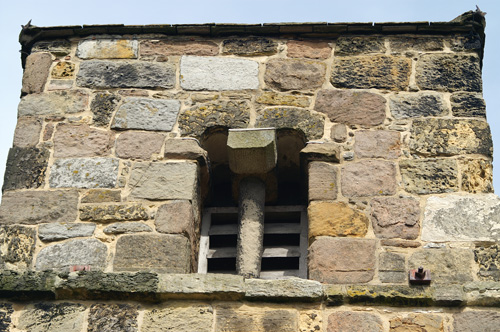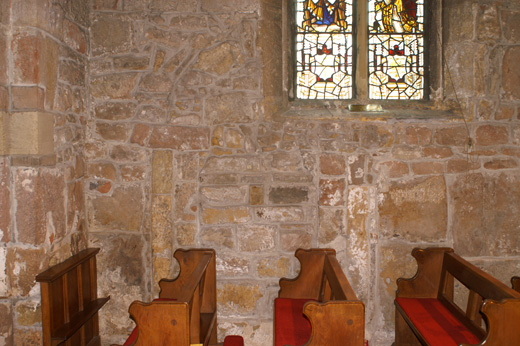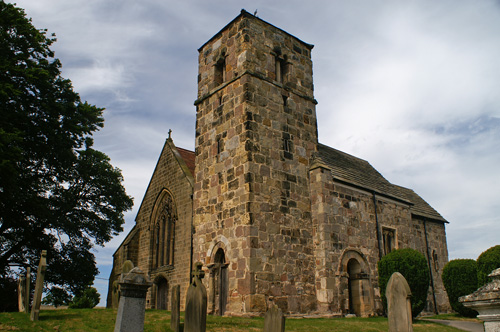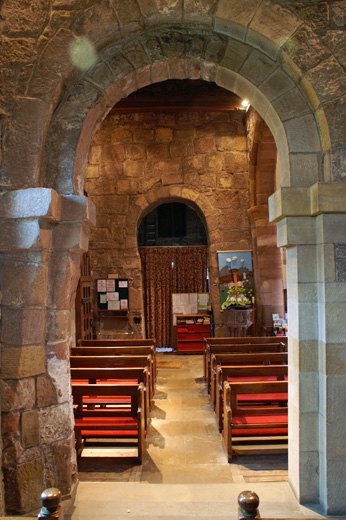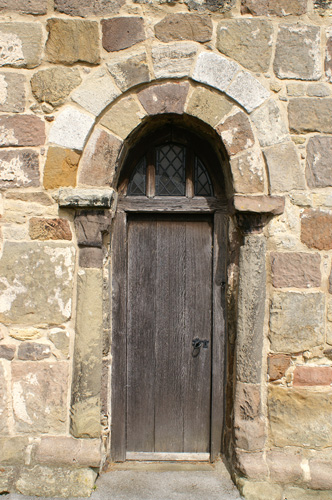|
Kirk Hammerton is another of those unheralded churches that doesn’t appear in the popular church books but which certainly repays a visit. We found it only because of seeing a wall chart of the local churhes in Ripon Cathedral.
Kirk Hammerton dates from around 950AD. Its Anglo-Saxon tower is complete, unchanged and a delight to behold. Its south aisle is also Saxon although it has suffered from some depredations, especially with the replacement of the original windows and doors but it has changed little since the Norman alterations in around 1150. The tower and south aisle were undoubtedly the original Anglo-Saxon church, largely intact to this day. The tower arch and the south side chapel arch are also untouched Saxon.
The Normans left us a lancet window in the south aisle wall and a curious arrangement of sedilia and piscina. The latter is believed to incorporate the Norman bowl of a pillar piscina, but nobody seems to advance any evidence for this. Indisputably it is ancient, but I can’t work out who would have carried out this work and why. If it was the Normans why would they have used the top of a pillar piscina? Maybe they re-used a Saxon artefact. is anyone able to shed any light on this?
The rest of the church has suffered from two waves of rebuilding in 1834 and 1891. The North aisle has been badly treated.
There is a lot of wall painting that presumably dates from the Victorian “re-furbishment”. It’s all a bit messy architecturally, but there is plenty of interest here and the tower alone is worth a short detour from the madness of the A1M!
|

